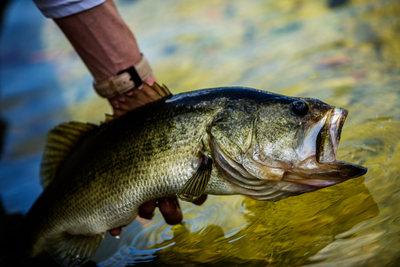There are many specifications and features that go into our rods and reels. As anglers, we all do our best to understand as much as we can so we can itive impact on the water. Gear ratio and drag rating are two specs of every fishing reel and they’re the two most misunderstood.
Now, you might be thinking. Do I really need to know this to catch fish? The answer is no, of course you don’t need to know it but the anglers who go the extra mile to learn information like this are the ones that have the best chance on the water. We can all use an advantage, right?
What is Gear Ratio?
Your gear ratio refers to how many times the spool turns each time you turn the handle. For example, if you have a 6.4:1 gear ratio, it means that each time you crank the handle, the spool will turn 6.4 times.
The higher the number, the faster the retrieval, the lower the number, the slower the retrieval. Keep in mind that the spool size and how much line you have on the reel will also impact these numbers so take them with a grain of salt.
Now how do you take this information and apply it to your fishing? The initial thought is that the higher the number, the faster the retrieval, the better the reel. But, that’s not always true. Fast is only good when the presentation calls for it.
You’ve got three different applications when it comes to gear ratio, slow, medium, and fast.
Low Gear Ratio
Low or slow gear ratios range between 5:1 and 6:1. These are best for diving crankbaits and bigger lures. The slow retrieval allows the bait to get further down in the water column which is where your strike zone is.
Fast Gear Ratio
If you’re presenting baits in particular locations and you know where the fish are, you might want a faster gear ratio. This is the ideal choice for soft plastics and topwaters where you drop the lure and quickly jerk it out or away from dense cover.
I find that the smartest choice when it comes to gear ratio is to go somewhere in the middle. 6.4:1 and 7:1 are ideal ratios that apply to most fishing scenarios.
What is Drag Rating?
A reels drag rating typically refers to the maximum amount of pressure you can put on the reel before you start to strip the line and smoke the gear system. Keep in mind that most reels aren’t designed to ever reach their max drag so it’s something you don’t want to push if you don’t have to.
If we’re really going back to the basics, drag is what allows you to still crank the handle on a reel even though the fish is applying reverse tension and pulling the line in the opposite direction. If the drag is really loose it will allow the fish to take you for a ride but you’ll have less of a chance of snapping the line. If the drag is really tight, you’ll have an easier time cranking but you run the risk of losing the fish.
The drag rating would then be a ¼ to a �" of your total line strength. So, if you’re using a 40lb line, you would have a drag rating of about 12lbs. That means you can handle up to 12 pounds of reverse pressure before things start to break down on you.
Now, how do we translate this to success on the water?
You want to make sure you always have your drag set properly based on where you’re fishing, what you’re using, and what you’re targeting. It’s impossible to provide precise numbers because I don’t know where you’re fishing or what type of line you have but I recommend keeping these two factors in mind next time you hit the water.


